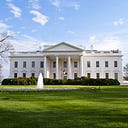
Behind the Lens:
Selma, 50 Years Later
by Pete Souza, Chief Official White House Photographer
March 7, 1965. It became known as “Bloody Sunday.” Six hundred people defied the warnings of authorities and attempted to march across the Edmund Pettus Bridge from Selma, Alabama, to show the desire of black American citizens to exercise their constitutional right to vote.
I was a young boy growing up in Massachusetts at the time, and I can’t say that I was aware of what was happening in Selma. I didn’t know the marchers were attacked at the bridge with billy clubs and tear gas. I didn’t know that there was this much hatred in the South between blacks and whites.
In later years, as I became interested in photojournalism, it was the photographs that brought that awful day to life for me.
I came to admire the photographs especially of Charles Moore, a photojournalist who was documenting civil rights for Life magazine. I probably learned more about what had happened on that day and that period of time by studying his photographs than I did in any history class I ever had in school. For me, the photographs depicted the horror and the hatred in a way that words couldn’t.

Last Saturday, as I accompanied the Obama family to Selma for the 50th anniversary of Bloody Sunday, I couldn’t help but think of the photographs taken by Charles Moore and other brave photojournalists 50 years ago. Their photographs, taken ostensibly for daily and weekly publications, have now become powerful images for history.
Their frozen moments in time are with us forever.
Last Saturday, my job was much easier. There were no billy clubs or tear gas. Along with colleague Lawrence Jackson, I was there to also capture moments in time for history. But these were symbolic and celebratory moments.
John Lewis, 50 years later, was not being clubbed at the bridge; he was there as a Congressman from Georgia, introducing the President of the United States.
Activist Amelia Boynton Robinson was not being knocked unconscious by a state trooper; as a 103-year-old, she was there in her wheelchair, marching across that same bridge next to the President and First Lady.
These were just two of the dozens of foot soldiers in attendance who had marched that day 50 years ago and helped changed the course of history. Without them, it’s unlikely that I would have been there documenting my boss, Barack Obama — the first African-American to become President of the United States.
It is perhaps fitting that we’ve chosen a gallery on the 50th anniversary of that day in Selma to kick off a new way of presenting photographs. In the weeks and months to come, we’ll regularly post galleries like this — providing a different perspective on life here at the White House or on the road. Sometimes it will be a series of thematic images. Other times, it might just be a single photo with a great story behind it. Take a look, check back for more, and let us know what you think.

(Official White House Photo by Pete Souza)

(Official White House Photo by Pete Souza)

(Official White House Photo by Pete Souza)

(Official White House Photo by Pete Souza)

(Official White House Photo by Pete Souza)

(Official White House Photo by Pete Souza)

(Official White House Photo by Pete Souza)

(Official White House Photo by Lawrence Jackson)

(Official White House Photo by Lawrence Jackson)

(Official White House Photo by Pete Souza)

(Official White House Photo by Pete Souza)

(Official White House Photo by Pete Souza).

(Official White House Photo by Pete Souza)

(Official White House Photo by Pete Souza)

(Official White House Photo by Pete Souza)

(Official White House Photo by Pete Souza)

(Official White House Photo by Pete Souza)

(Official White House Photo by Pete Souza)

(Official White House Photo by Pete Souza)

(Official White House Photo by Lawrence Jackson)

(Official White House Photo by Pete Souza)

(Official White House Photo by Pete Souza)

(Official White House Photo by Pete Souza)

(Official White House Photo by Pete Souza)

(Official White House Photo by Pete Souza)

(Official White House Photo by Pete Souza)
Visit WhiteHouse.gov/Selma to learn more and watch President Obama’s speech.
